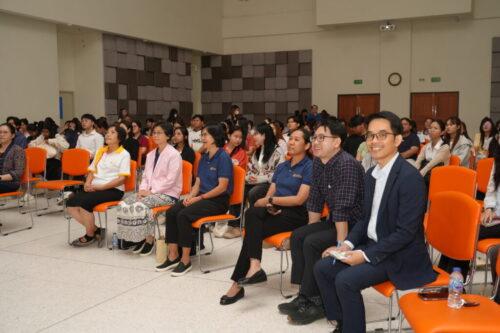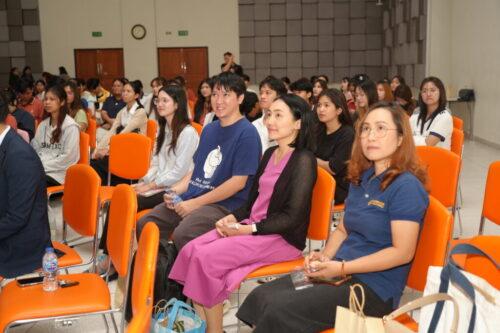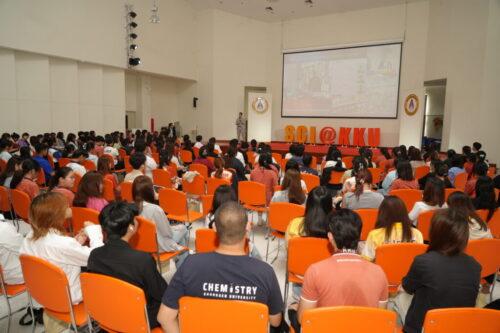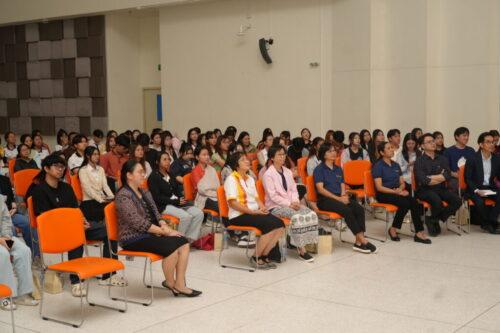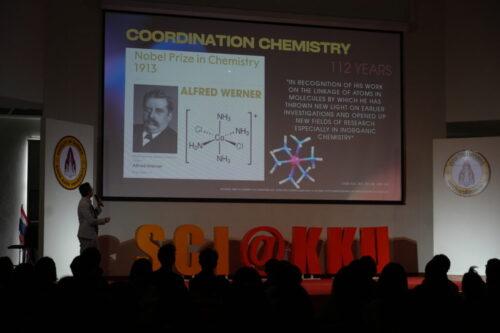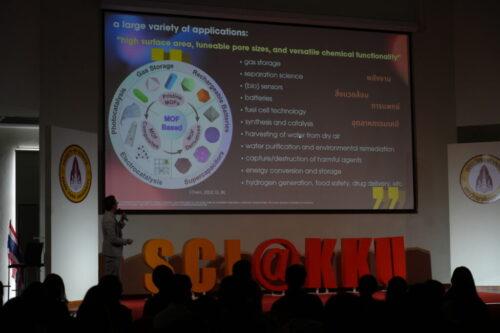The Faculty of Science at Khon Kaen University hosted a special lecture on October 17, 2028, exploring the science behind the 2025 Nobel Prize in Chemistry, awarded for the development of Metal-Organic Frameworks (MOFs).
The lecture, titled “New Rooms for Chemistry: How MOFs’ Porous Architecture Has Won Its Creators the 2025 Nobel Prize in Chemistry,” was delivered by Associate Professor Dr.Jaursup Boonmak , a faculty member in the chemistry department. The event drew a large audience of faculty, staff, and students from chemistry and materials science programs.
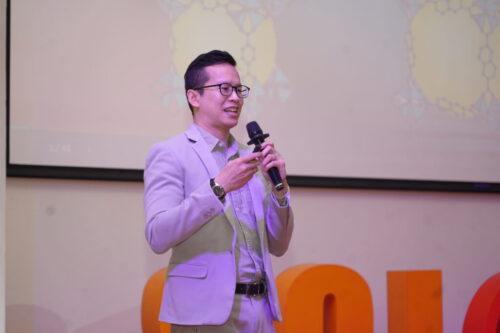
Associate Professor Dr.Jaursup Boonmak was inspired by the recent Nobel announcement, which honored Professors Susumu Kitagawa, Richard Robson, and Omar M. Yaghi for their pioneering work on MOFs, including the development of iodine adsorbents and metal-organic gels for dye absorption.
During the presentation, Dr. Chaosap explained that MOFs are crystalline structures composed of organic molecules linked by metal ions. He simplified the concept by comparing them to “condominiums with many rooms,” which can be custom-designed to store specific substances. A key feature of MOFs is their exceptionally high surface area, reaching up to 8,000 square meters per gram. To illustrate, he noted that a sugar-cube-sized amount of MOFs has a surface area equivalent to a standard football field.
The lecture detailed the foundational contributions of the three Nobel laureates. Professor Richard Robson of Australia laid the groundwork for creating orderly structures. Professor Susumu Kitagawa of Japan introduced the concept of MOF flexibility and classified them into three generations. Professor Omar M. Yaghi of the United States coined the term “Metal-Organic Framework” and developed the “reticular synthesis” method, likened to assembling Lego bricks.
Associate Professor Dr.Jaursup Boonmak also highlighted the practical applications of MOFs in addressing major global challenges. Examples included MOF-303, which can extract 5 liters of water per day from desert air per kilogram of material; MOF-74, highly effective at capturing carbon dioxide; and MOF-808, capable of extracting rare earth elements from wastewater. He also shared his own research group’s work on developing MOF-based iodine gas sensors and gels for dye absorption.
The event was organized to disseminate cutting-edge scientific knowledge and inspire a new generation of students and researchers. It reflects the faculty’s commitment to fostering innovation to solve societal and environmental problems, aligning with sustainable development goals in quality education and innovation. The session was attended by faculty leadership, including Assistant Professor Dr. Angkana Boonyued, Dean of the Faculty of Science.
